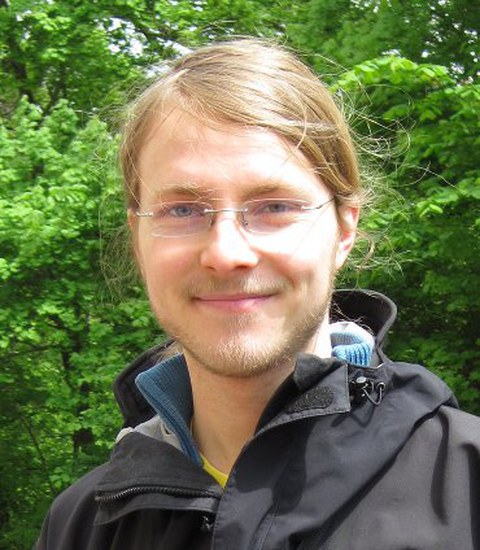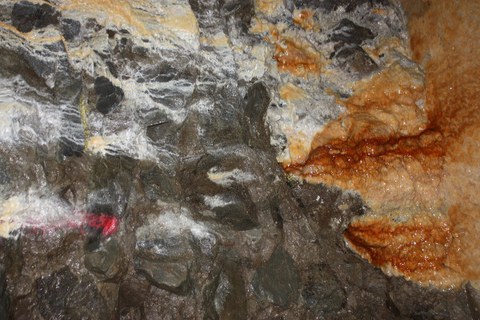Polymorphic uncertainty modeling of heterogeneous thermo-hydro-mechanical coupled systems under vague assumptions of parameter correlations
A continuation of the topic is currently taking place in the second project phase.
New hybrid working materials and constructions with heterogeneous material properties are due to the development of new light-weight building concepts more and more in use. Furthermore, many natural and technical materials are used which show a heterogeneous material distribution in the existing engineering constructions. Examples are typical geoscience materials or aggregate materials w.r.t their meso- and microscopic treatment in a multi-scale approach. The modeling of the material behavior during forecast simulations can either be done by the estimation of upper and lower bounds or by the application of multi-dimensional random fields.
In multi-field situations, e.g. coupled thermal-hydro-mechanical systems like dams, dikes or geologic deposits, there are a series of sensitive material properties which can be modeled via random elds. Often, these fields exhibit a certain correlation, e.g. in regions of old and aged material the hydraulic permeability might be increased while the mechanical stiff ness is reduced. The question arising is, if this has also effects on other material properties and if yes, how the interdependency can be taken effectively into consideration.
In the given proposal, a general methodology shall be derived which allows, based on a polymorphicuncertainty model, the generation of random fields for multi-physic applications, where however, the degree of interdependence is not fully known. Therefore, the proposal comprises the development, analysis and application of a polymorphic uncertainty model, which captures the random variability of the material properties with vague information concerning their correlations.
The methodology is planned to be applied for the assessment of the reliability of the structures in civil and geotechnical engineering which are dominated by multi-physical phenomena.
The qualitative gain applying polymorphic uncertainty models compared to classical
uni-morphic models should be analyzed.
As outlook for a second funding term, the related inverse problems might be tackled, e.g. how to determine parameters of the systems in a polymorphic uncertainty model and how to asses uncertainties in the identified parameters. Therefore, our approach meets the complexes B and C of the announcement of the SPP 1886.
Goal 1: Derivation and efficient implementation of methods based on polymorphic uncertainty descriptions for the generation of random fields for multiple parameters in multi-field, multiphase problems with vaguely known degree of correlation and correlation lengths
Goal 2: Implementation for fluid-flow problems in porous deforming materials under non-isothermal conditions.
Goal 3: Comparison of results, in particular w.r.t to computationally assessed reliability, with classical stochastic approaches
Summary of the first funding phase
Proper models of uncertainty are required to analyze engineering structures realistically. Stochastic approaches are usually fitting for cases where uncertainty models of system parameters are based on a large number of experimental data sets. On the contrary, interval or fuzzy uncertainty models can be used to take a lack of knowledge or a very limit data basis into account. A combination of these and possibly other basic uncertainty descriptions yields a polymorphic uncertainty approach, for example a fuzzy random variable describing a material parameter.

Stochastic structural analysis of a unit square using domain decomposition: failure probability estimate as a function of the critical horizontal displacement for direct (reference), Polynomial Chaos Expansion (PCE) based and hybrid sampling method
Heterogeneous materials in geotechnical applications show spatial variation which are usually described by random fields. Random fields are characterized by an auto-correlation structure, whereas material parameter interdependencies can be taken into account using cross-correlated random fields. Usually, auto- and cross-correlations parameters are only vaguely known. Therefore, a main feature of the project was to describe these parameters by convex fuzzy sets leading to a fuzzy probability-based random field description of material parameters.
The utilization of this polymorphic uncertainty model on large 3D finite element models leads to resource and time demanding computations. To tackle this problem a twofold approach was investigated. First, a smooth response surface surrogate was trained within the fuzzy space. Secondly, a domain decomposition (DD) approach was used to reduce the computational costs in the stochastic and real space. Both the reduction of the stochastic dimensionality and the parallelized execution of the subdomain problems is accomplished. The approach utilizes a subdomain based stochastic surrogate model based on Polynomial Expansion. Within the project the mentioned DD approach was enhanced to be used in the case of estimating failure probabilities for non-gaussian cross-correlated random fields. Within the DD scope a hybrid failure probability estimator was suggested yielding highly accurate results while reducing the computational effort even further.

Schematic of a fuzzy-stochastic reliability analysis: fuzzy analysis utilizing a failure probability surrogate, stochastic analysis using a domain decomposition approach
A hydro-mechanical coupled system of a gravity dam structure, implemented as finite element model, served as an application example. Using the described framework (without DD) uncertainty quantification of the model response was analyzed. Further, failure probabilities were efficiently estimated for three cross-correlated non-gaussian random fields using the fuzzy space surrogate. The computational efficiency was enhanced significantly using the domain decomposition approach, especially using the hybrid failure probability estimator.
Essential project findings
- Generation of fuzzy probability based cross-correlated non-Gaussian random fields
- Usage of an efficient alpha-level optimization on failure probability surrogate model
- Extension of the independent Generation of Gaussian random field in a DD approach to cross-correlated non-Gaussian random field
- Development of a hybrid domain decomposition failure probability estimation
- Application in reliability analysis of geotechnical engineering structures (gravity dam)

Hr. Schmidt
Dipl. Phys. Albrecht Schmidt
Bauhaus-Universität Weimar
Institut für Strukturmechanik
- Drieschner, M.; Edler, P.; Dannert, M.:
Decision making and design in structural engineering problems under polymorphic uncertainty, In Engineering Structures, submitted January 2020 - Schmidt, A.; Herbrandt, S.; Henning, C.; Ickstadt, K.; Ricken, T; Lahmer, T.:
Numerical studies of earth structure assessment via the Theory of Porous Media using fuzzy probability based random field material descriptions, GAMM Mitteilungen 42-1, 2019 Link - Schmidt, A.; Schietzold, N.-F.; Dannert, M.; Fau, A.; Fleury, Rudolfo M.N.; Graf, W.; Kaliske, M.; Könke, C.; Lahmer, T.; Nackenhorst, U.:
GAMM Mitteilungen 42-1, 2019 Link




